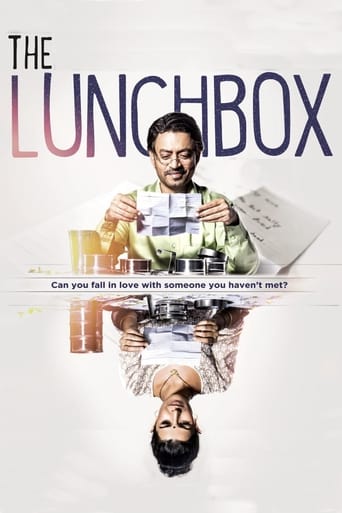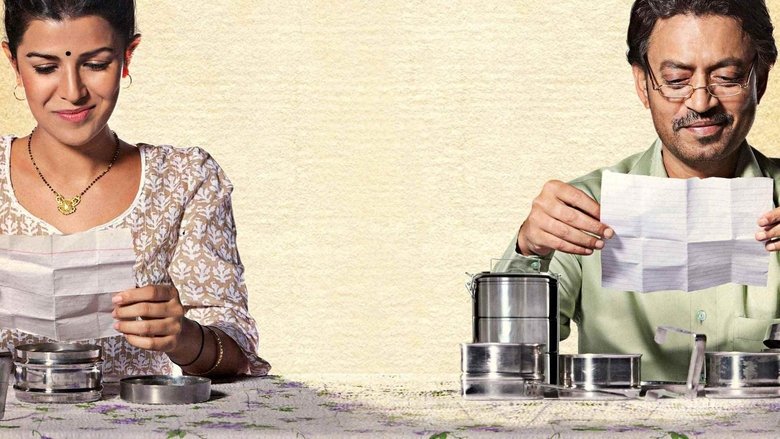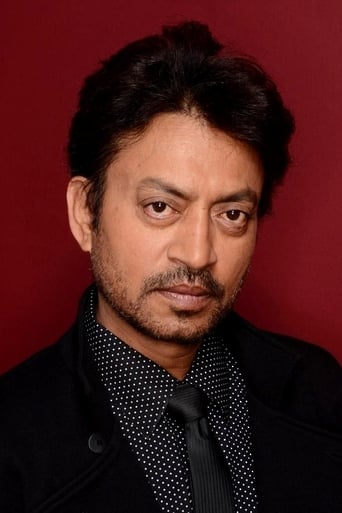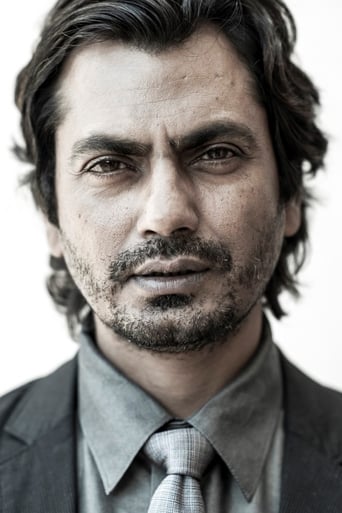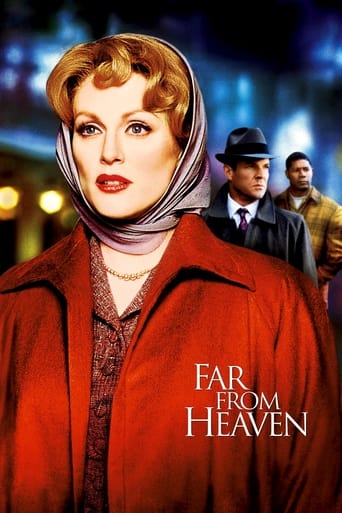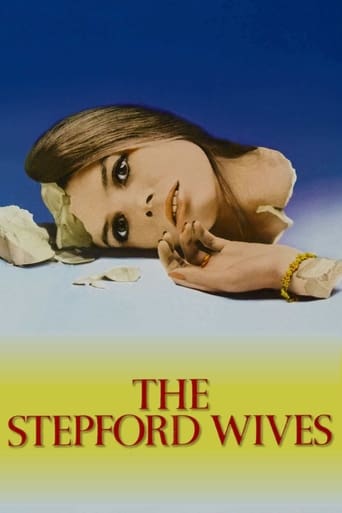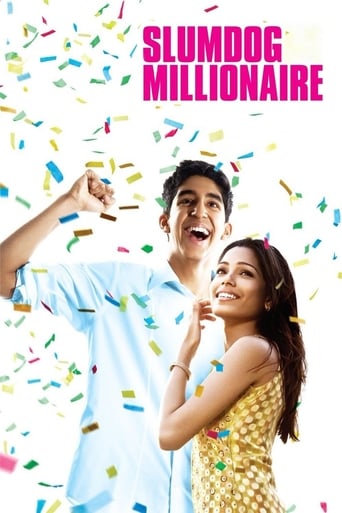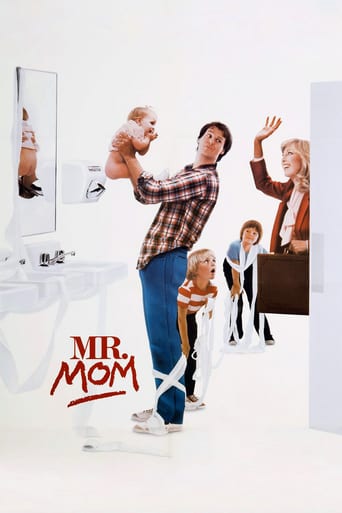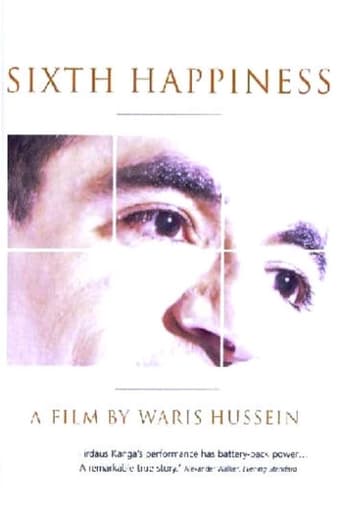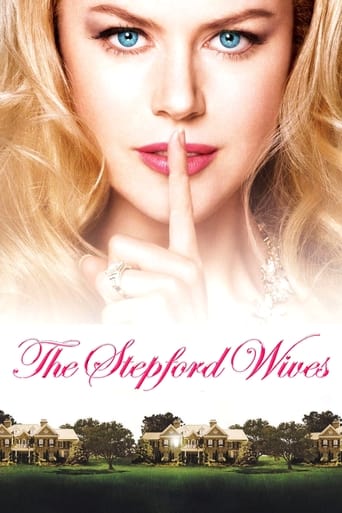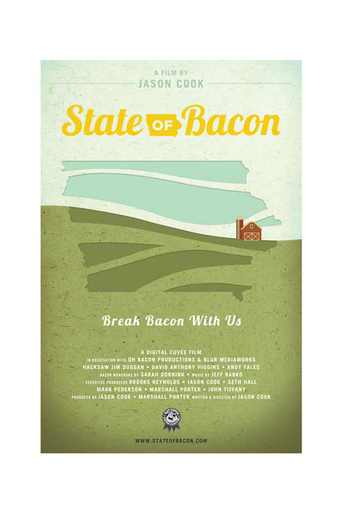The Lunchbox (2013)
A mistaken delivery in Mumbai's famously efficient lunchbox delivery system (Mumbai's Dabbawallahs) connects a young housewife to a stranger in the dusk of his life. They build a fantasy world together through notes in the lunchbox. Gradually, this fantasy threatens to overwhelm their reality.
Watch Trailer
Cast


Similar titles
Reviews
'New Indian cinema' contains a broad spectrum of various genres, directors and other classifications of films. It is in essence the collection of all those who oppose the dominant film code of Bollywood in alternating ways (Verma, 2011). One of the most interesting films is Ritesh Batra's The Lunchbox (2013), as it feels more like a European art house film set in Mumbai than a traditional Indian film.To accurately denote how The Lunchbox differs from the dominant Bollywood code a clear definition of the latter is needed. Ganti has postulated that the English-speaking world created the term 'Bollywood' in the '70s, when the biggest Indian productions generated international interest for the first time. The coagulation of 'Bombay' and 'Hollywood' was a reference to the influence of Bombay film productions on the Indian cinema culture as they are shown nationally and internationally. A more recent interpretation of the term refers to the Bombay cinema as the only non-Hollywood film industry that is globally dominant and present. However, the actual use of the term indicates a specific film style instead of a particular film industry; there are 'Bollywood' films that are not made in Bombay (2004). The primary aspect of the archetypical 'Bollywood' production is the melodrama, both in content -the masala mix of many genres, and aesthetically -in the staging, colour use and acting (Mishra, 2002; Mooij, 2006). An important point in the comparison to North-American film history is the continued dominance of the 'Bollywood aesthetic'. Whereas Hollywood experienced a crisis in the '60s, which led to a change in film style due to the rise of new Hollywood and the end of the production code, major 'Bollywood' productions have largely remained unchanged in their aesthetic since the advent of widescreen in the '50s. Lutgendorf has noted that this cinematic aesthetic was already present in the foundation of 'Bollywood', namely the pre-modern Indian storytellers that "were already fond of flashbacks, lyrical interludes, surreal landscapes, and vast and crowded Cinemascopic tableaux; their language was visually intense, almost hallucinatory: screenplays awaiting the screen." (2006, p. 250)The most important aspect of the 'Bollywood aesthetic' for this essay is the rejection of the realistic portrayal that is dominant in Western film culture. This preference for the constructed, the supernatural was, as mentioned above, present in oral tradition long before the advent of cinema. To break with this aesthetic is thusly moving away from not only the dominant film style but also Indian storytelling in general. This is why The Lunchbox appears to the spectator as a non-Indian film, because it conveys a story in a way that mirrors the Western narrative film tradition through its realism. Firstly, Batra utilises no non-diegetic music or song and no voice-over. His film contains two songs in a repeated scene, he shows the lunchbox carriers singing on the train both times. This results in an accurate representation of Mumbai with diegetic music. The Lunchbox only hints at the 'Bollywood' dance scene when two characters are discussing an old hit song that originated from a 'Bollywood' film. In summary, the film acknowledges the dominant film style, but rejects the constructed nature of independent or integrated dance scenes in its goal for realism.Furthermore, Batra employs a -in contrast to the vibrant style of 'Bollywood', dull colour pallet, giving Mumbai/Bombay a gritty and bleak outlook, akin to the character of a modernised urban environment. The Lunchbox has many dark scenes, in contrast to many 'Bollywood' productions that are always well lit. This darker aesthetic is also translated into the content, as the film deals with topics such as loneliness, infidelity, addiction and estrangement. Batra wants to portray the whole picture of Indian society, not just the good and beautiful parts as is done in most of the 'Bollywood' productions. Above all he wants to explore the social conditions through individual characters, in other words not a general realistic aesthetic but a specific form created by Michelangelo Antonioni, i.e. introspective realism. The adaptation of this style is further exemplified in the many shots where the protagonist is the only object in focus, symbolising their estrangement, a schemata Antonioni perfected in Il Deserto Rosso (1964) (Cook, 2004). In addition, The Lunchbox displays many scenes in the style of the slow cinema where the film time and the real time are equal. The most striking examples are the scenes that present the protagonist consuming the daily lunchboxes, all in long takes. Cook notes in his book from 2004 that this stylistic technique also originated from the work of Michelangelo Antonioni, who introduced it in L'Avventura (1960).Conversely, the only filmic aspect Batra retains from the 'Bollywood' aesthetic is the cinematic aspect ratio of 2.35:1 (the standardised CinemaScope format). This indicates that he still envisioned The Lunchbox to be shown in theatres and cinemas rather than on television. Batra does not eschew the economical aspect of the Indian film tradition; he does not aim for the same audiences as 'Bollywood', but still strives to reach niche crowds in smaller venues and multiplexes. Overall, Batra has rejected the dominant 'Bollywood' tradition not out of a reactionary action. He wanted to realistically portray the social problems that arise in a modernised urban environment. The 'Bollywood' aesthetic, with its melodramatic staging, masala story structure, colourful pallet and energetic dance sequences, is not suited to convey stories about estrangement and isolation. The Lunchbox adapts from Michelangelo Antonioni, a filmmaker that also dealt with the topic of modernisation and how it impacted those who experienced it. Subsequently, given the motivation behind Batra's appropriation of Western film tradition, it is unfair to devalue his film as a languid way to appease international audiences, as was the case in Sarina Masukor's review of the film (2015). The Lunchbox handles its external film language for the purpose of reflecting on and criticising the Indian society and culture that has undergone modernisation, a fact that major 'Bollywood' productions often neglect in their narrative structure.Cook, D. A. (2004). A history of narrative film (4th ed.). New York: W.W. Norton.Ganti, T. (2004). Introduction Bollywood: a guidebook to popular Hindi cinema (pp. 1-52). London: Routledge.Lutgendorf, P. (2006). Is There an Indian Way of Filmmaking? International Journal of Hindu Studies, 10(3), 227-256.Masukor, S. (2015). Old Recipe, New Flavour: Ritesh Batra's The Lunchbox. Metro(183), 70-73.Mishra, V. (2002). Bollywood cinema: Temples of desire: Psychology Press.Mooij, T. (2006). The new Bollywood: No heroines, no villains. Cineaste, 31(3), 30-35.Verma, R. (2011). Beyond Bollywood: Indian cinema's new cutting edge. The Guardian, 23.
When The Lunchbox came out,I remember that focus on the film itself ebbed away,after it was unexpectedly not chosen as India's entry to the Oscars. Taking a look at what films were on the BBC iPlayer for Easter,I was delighted to see this title on the line up,which led to me opening the lunchbox.The plot:Since the death of his wife, Saajan Fernandes has put all his energy into his work. Nearing the age of retirement, Fernandes is asked to teach his upcoming replacement Shaikh the ropes of the business. Spending most of the day at home, Ila finds the spark in her marriage to have gone. Coming up with ways to get it back on track,lla decides to make dabbawalas for her husband. Unknown to lla,the delivery company send lla's meal to Fernandes,whose delight with the meal opens a new box in both their lives.View on the film:Cooking up his feature debut,co-writer/(with Vasan Bala) director Ritesh Batra & cinematographer Michael Simmonds (who was also the cinematographer on Project Nim) cut the Indian cinema extravagances for an intimate,low-key indie atmosphere. Spending 6 months rehearsing the movie and keeping to a trim 29 day production,Batra and Simmonds give the title a documentary appearance, with the office lights of Fernandes workplace and the simmering gold lights of lla's kitchen displaying their humble roots. Connecting Fernandes and lla with narration,Batra brilliantly balances "show and tell" via the voice-overs reading the letters covering the progression of the plot,whilst the lingering shots on the faces of lla and Fernandes captures the emotive changes taking place. Opening up the box,the screenplay by Batra and Bala avoids traditional Bollywood "masala" (Melodrama) to instead intelligently focus on the routines that subtly change in lla and Fernandes lives,from the resentment Fernandes has for his replacement turning into mutual respect,to lla leaving the house,and getting on a new train track in life. Building up to lla and Fernandes first encounter,the writers bravely hold back the tears for an unexpected twist which brings the exchanging letters between Fernandes and lla down to a realist level.Spending weeks living with "lla's" disinterested husband (played by a terrific Nakul Vaid) in order to build up the relationship in a method acting style, Nimrat Kaur gives a marvellous performance as lla.Opening to the outside world lla's letters to Fernandes,Kaur gradually builds lla's independent strength to look with new eyes at the outside world. Introducing Fernandes by showing him firmly stick to a daily routine, Irrfan Khan displays an incredible subtle touch in expressing Fernandes anticipation of finding a new lla letter in his lunchbox.
For all those out there who thinks bollywood always copies, you should see this one. Who would have thought that a 9-5 job person who was lost in the world is brought back by a tiffin box and the story goes much more deeper about the hidden love of a housewife who too was lost in her own world. Slow but it still binds you to your seat "Simple events of life happy or sad,/ Some sad strings from the train of forgetfulness,/ Not fraught with heavy descriptions,/ Not crowded with events,/ No advice, no philosophy/ Only the feeling that the story is not yet over/ Although there is no more to read..." Lastly, the best part of the movie is 'The Ending'. "Only the feeling that the story is not yet over, although there is no more to read". There is something unspoken in this movie. It depends viewers to viewers, where they actually like to go with "Sajan & Ila".
Rarely an Indian film without its trademark dancing-and-singing routines, director/writer Ritesh Batra's feature debut marvellously utilises the exotic "dabbawalas" system of Mumbai, which is an intricate lunch delivery service to people at work from their their homes or restaurants and is remarkable for its accuracy, but Batra fictionalises a little mix- up of the system and links two strangers into an epistolary communication, and from there, their penfriend-ship will further sublimate into something more genuine and profound.Saajan Fernandes (Khan) is a middled-aged widower on the brink of early retirement as a senior accountant, he is withdrawn, cynical and tries to dodge the responsibility to train his new replacement Sheikh (Siddiqui). One day his colourless life is revitalised by a mis- delivered lunch-box which he vastly enjoys. The lunch-box is made by Ila (Kaur), a housewife who attempts to win the her husband's heart through her cuisine. When Ila realises the delivery blunder, instead of righting the mistake, she starts to leave a note to this stranger in the lunch-box and Saajan writes back too, steadily, they exchange their own stories and life philosophy, which becomes the enzyme of a blossoming romance since both find a conduit and a confidant to change their disappointing status quo. Like YOU'VE GOT MAIL (1998, 7/10), THE SHOP AROUND THE CORNER (1940), the two protagonists are destined to meet sine they are not like Helene Hanff and Frank P. Doel in 84 CHARING CROSS ROAD (1987) who are divided by the Atlantic ocean and deferred by a difficult economy situation. It is quite easy for them to meet when all the romantic buildup reaches its threshold, Ila finds out her husband is cheating on her whereas Saajan gets close with the orphan Sheikh, takes him as his protégé, and is ready to turn a new chapter of his life. But Batra refuses to hold out such an easy pass for their significant first meeting, for the sake of narrative twist, he wields the "sudden" epiphany of age difference as the obstacle to morally righteously curb the passion from Saajan's side. And from then on, the film descends into a limbo of indecision, through Saajan's capricious determinations, it actually reflects Batra's insecurity of how to consummate the story in an unconventional way, as his first feature, his endeavour fails to achieve that goal with the over-contrived open ending.Performances are uniformly pleasant to watch, Khan's goggled eyes alone can patently exhume his deepest inner feelings to an affecting effect. Kaur, also downplays the default setting of an under-appreciated wife and evinces her steely resolution of a woman doesn't yield to an unhealthy marriage. Siddiqui's Sheikh. comes around often as comic relief with an inherent optimistic spirit, registers a well-developed balance of humour and earnestness.The film's retro flair in rediscovering the magic power of authentic writings is naturalistic-ally endearing to endorse, and "sometimes the wrong train takes you to the right station", is the motto conspicuously referred three times along the whole movie, THE LUNCHBOX is a rarity among the usual Bollywood products, its message can reach unanimously to every soul who is inspired to find its rightful purpose, and its art-house appeal can lure those who are disinterested in Indian cinema (like myself) into its poetic embodiment of an unusual encounter.

